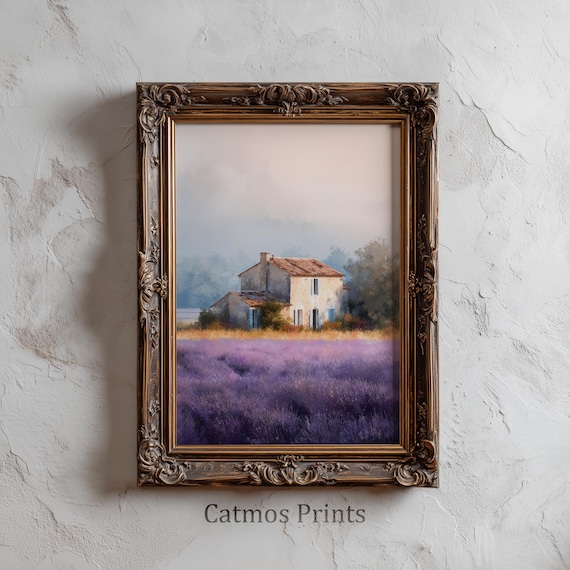Creating a Safe Inner Sanctuary Through Visualization: A Path to Inner Peace
Published on July 12, 2025

Some years ago, during a particularly stressful period of my life, I found myself constantly tense—mentally cluttered, emotionally drained, and spiritually disconnected. I was juggling too much and losing touch with what felt grounding and true. A friend, noticing how frazzled I had become, gently suggested, “Have you ever tried creating an inner sanctuary?”
I had no idea what she meant.
She explained that it wasn’t about escapism, but about cultivating a space in the mind—quiet, safe, and personal—that you could visit at will. A mental refuge to come back to yourself when the world feels too heavy.
That evening, I gave it a try.
What began as a simple visualization practice turned into something I now return to almost every day. And it’s become one of the most powerful tools I know for accessing clarity, emotional balance, and peace.
The Science Behind Inner Imagery
Visualization is not wishful thinking. It’s a practice grounded in neuroscience.
According to a 2018 study published in Frontiers in Psychology, mental imagery activates many of the same neural pathways involved in actual perception. That means when you visualize yourself in a peaceful space, your brain and nervous system begin to respond as though you were physically there.
- Physiological effects: The breath slows, heart rate decreases, and cortisol (the stress hormone) levels drop.
- Emotional effects: A sense of safety emerges, emotional reactivity softens, and feelings of self-compassion increase.
- Cognitive effects: Focus sharpens, creativity improves, and decision-making becomes easier.
This is why athletes use visualization to rehearse movements, and why therapists sometimes guide patients through imagery to reduce trauma symptoms. It’s not imagination instead of reality—it’s imagination shaping reality.

French Lavender Field Art Print – Provence Morning Serenity (Digital Download) by CatmosPrints
View on EtsyMy Own Sanctuary
When I first started visualizing, I kept returning to a forest I had visited during a hiking trip in Sweden. There was a small clearing surrounded by tall birches and mossy stones, with dappled light filtering through the leaves. That space became my starting point.
In my imagination, I added a wooden bench, a mug of tea in my hands, and the sound of a nearby stream. Over time, my sanctuary grew more vivid. I knew how the bark of the trees felt beneath my palm. I could smell the earth after rain. And whenever I felt overwhelmed, I would close my eyes and go there.
The emotional effect was immediate. I felt held. Grounded. Seen.
A Simple Practice: How to Create Your Own Inner Sanctuary
You don’t need any special tools or previous experience. Just a few moments of quiet attention.
- Find a quiet space. Sit or lie down somewhere comfortable where you won’t be interrupted.
- Breathe intentionally. Inhale through your nose for four counts, hold for four, exhale through your mouth for six. Repeat 3–5 times.
- Set an intention. Ask yourself: What do I need most right now? Peace, clarity, safety, or love?
- Visualize your sanctuary. Let your imagination take you to a place where you feel completely safe, at ease, and nurtured.
- Engage your senses. See the colors, hear the sounds, smell the air, feel the textures. The richer the detail, the stronger the effect.
- Anchor the feeling. Place a hand over your heart or take a deep breath, saying silently: This is my sanctuary.
- Return gently. When ready, slowly open your eyes and notice how your body feels.
Common Themes for Inner Sanctuaries
Everyone’s sanctuary is different. Here are a few ideas readers have shared:
| Sanctuary Theme | Description |
|---|---|
| Nature-based | Forests, beaches, mountains, or meadows—often tied to past experiences. |
| Elemental | Spaces built around fire, water, air, or earth; a glowing hearth or cave. |
| Sacred spaces | Temples, candlelit rooms, altars with flowers and symbols. |
| Memory-based | Grandmother’s kitchen, a childhood bedroom, a beloved holiday place. |
| Imaginary realms | Floating gardens, starry domes, or crystal caves created by pure imagination. |
You can revisit the same place each time, or allow it to shift depending on what you need. Some sanctuaries evolve with you over months and years, becoming mirrors of your inner journey.
Why This Matters
The world demands so much from us. Especially as women, we are often holding space for others—emotionally, physically, and mentally—without realizing how little we hold for ourselves.
Having an inner sanctuary is a way to reclaim inner ground. It is not selfish; it is essential. A sanctuary is a place where no one needs anything from you. A place where you are simply allowed to be.
One reader shared that her sanctuary is a lavender field where bees hum and the sky is endless blue. Another visits a beach at sunset where she feels her heart soften. A third always returns to her grandmother’s kitchen, where the smell of fresh bread reminds her: I come from love.
That’s the essence. Your sanctuary reminds you of who you are when the world forgets.
Making It a Ritual
Like any practice, the benefits of visualization deepen with consistency.
- Morning Ritual: Begin your day with sanctuary time to set a tone of calm focus.
- Bedtime Wind-down: Especially useful if you struggle with sleep anxiety.
- Emotional Reset: Take short sanctuary breaks during stressful or overstimulating moments.
- Integration: Visit your sanctuary after journaling, meditation, or rituals to absorb what has surfaced.
To enrich the practice:
- Light a candle.
- Sip herbal tea.
- Use essential oils like lavender, cedarwood, or frankincense.
- Pair the sanctuary with a journaling prompt: What do I feel here? What do I need to remember as I return to my day?
You may also explore naming what you're becoming as a companion ritual—giving language to the transformation your sanctuary helps nourish.
Beyond the Personal: Collective Sanctuaries
Inner sanctuaries are deeply personal, but they can also serve as bridges to collective well-being. Some meditation groups invite members to share their sanctuaries, weaving a tapestry of imagery that feels like a communal refuge. This shows us that healing does not happen in isolation—we are always connected.
If you are part of a women’s circle, spiritual group, or even a supportive friendship, consider sharing glimpses of your sanctuaries with each other. You may find common threads that remind you of our shared human longing for safety, belonging, and beauty.
Final Thoughts
Creating a sanctuary within is not about retreating from life, but about remembering who you are within it.
It is a gentle act of sovereignty, a declaration that you can carry peace with you wherever you go.
It costs nothing, requires no tools, and offers something the outer world often cannot: presence, renewal, and perspective.
Tonight, try it for yourself. Light a candle. Sit quietly. Close your eyes. Breathe.
Go home—not to a place, but to yourself.
Continue Your Journey
If you’d like to explore more, discover your unique feminine archetype through our Archetype Quiz. It will reveal hidden patterns of your inner world and offer a downloadable guide with insights and rituals tailored to your archetype.
